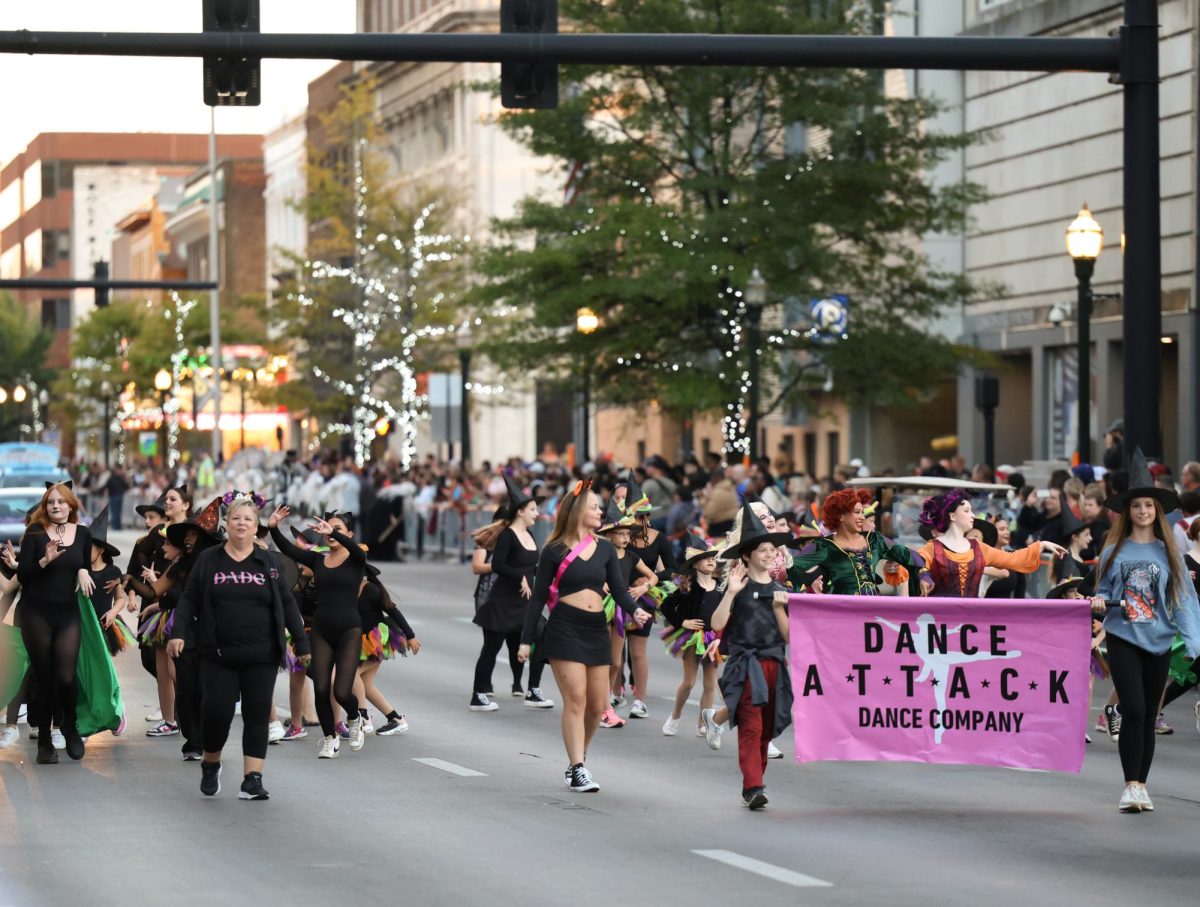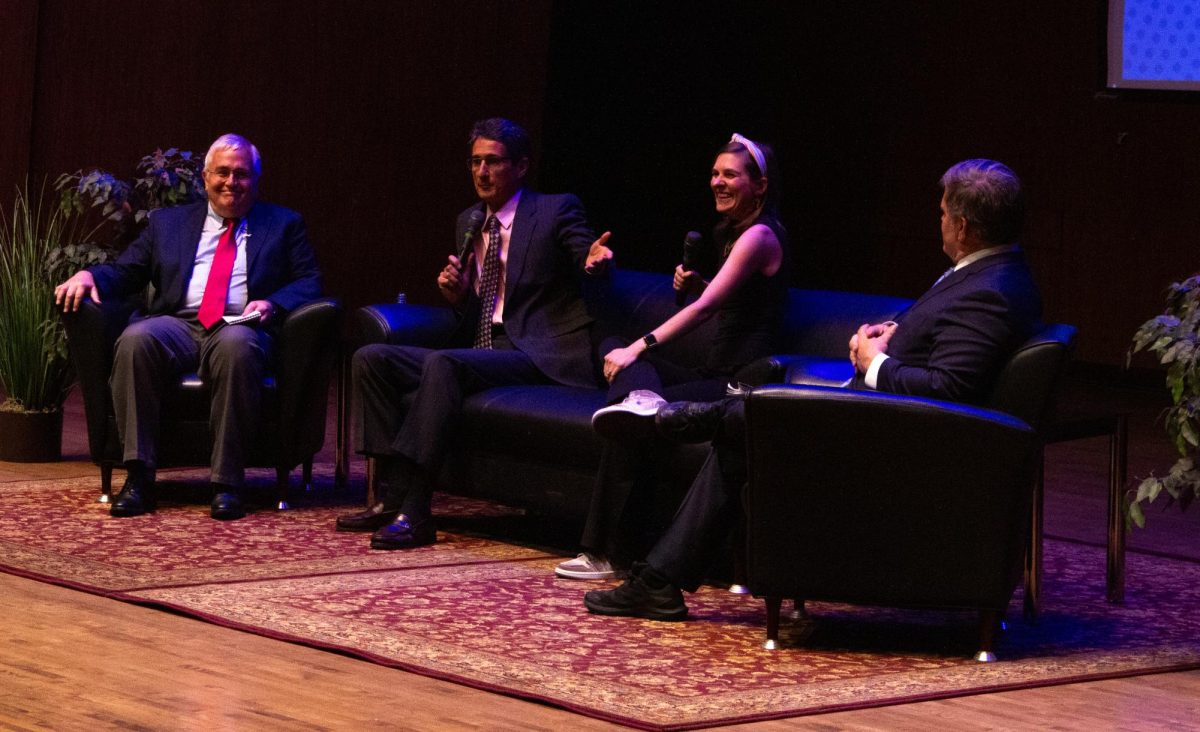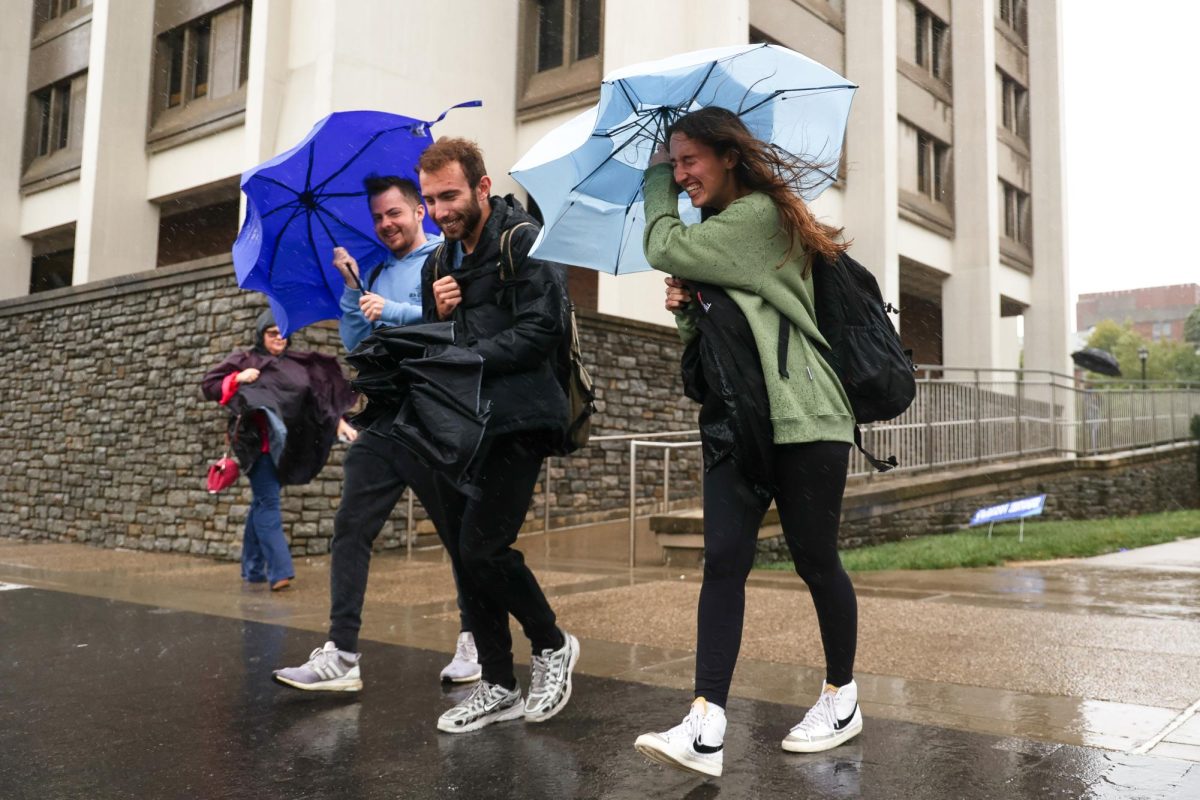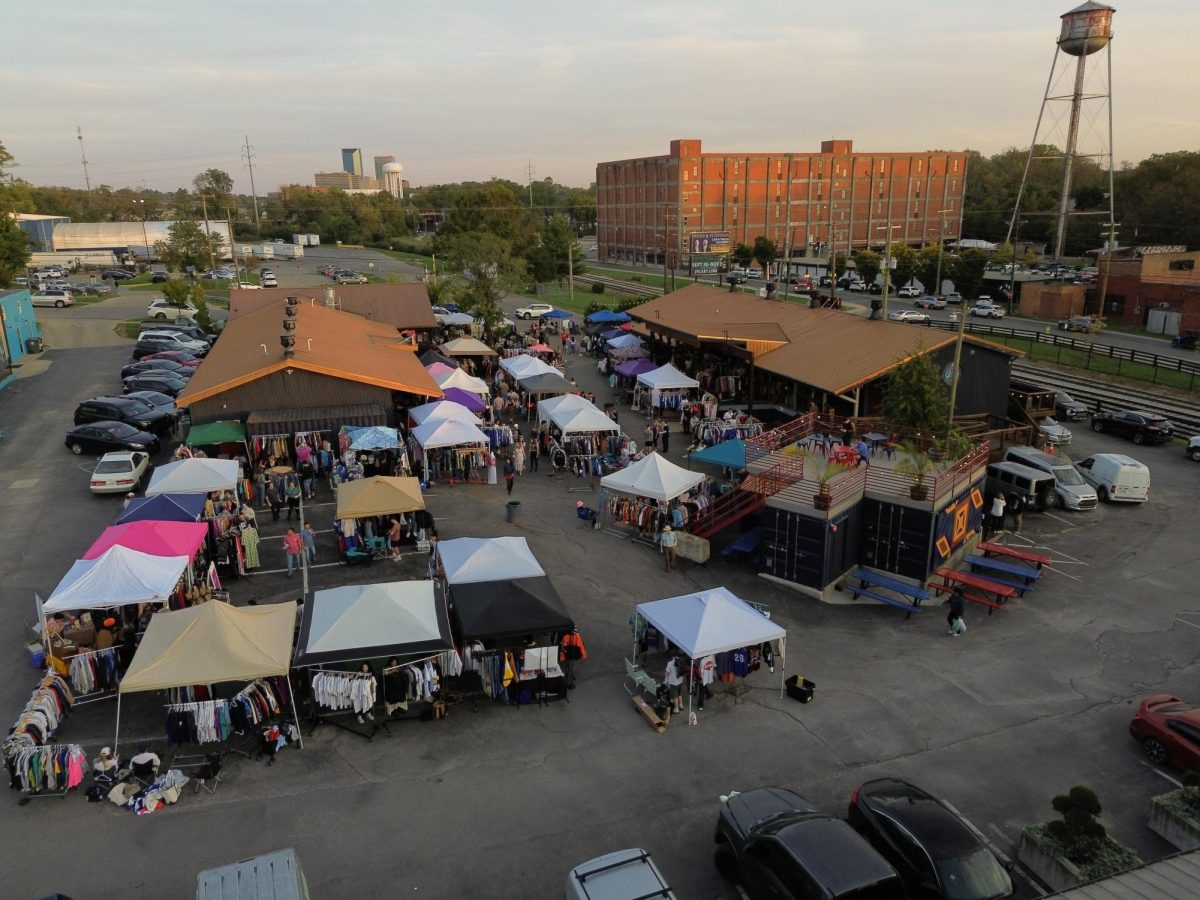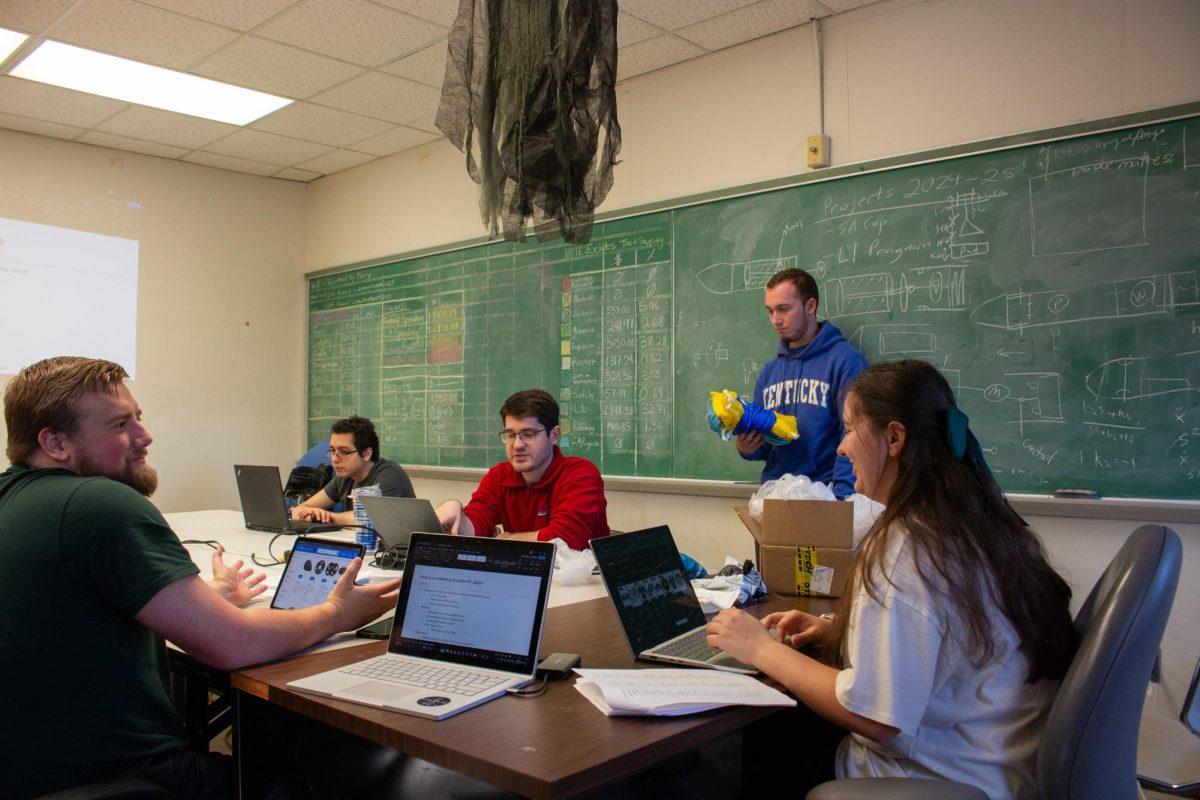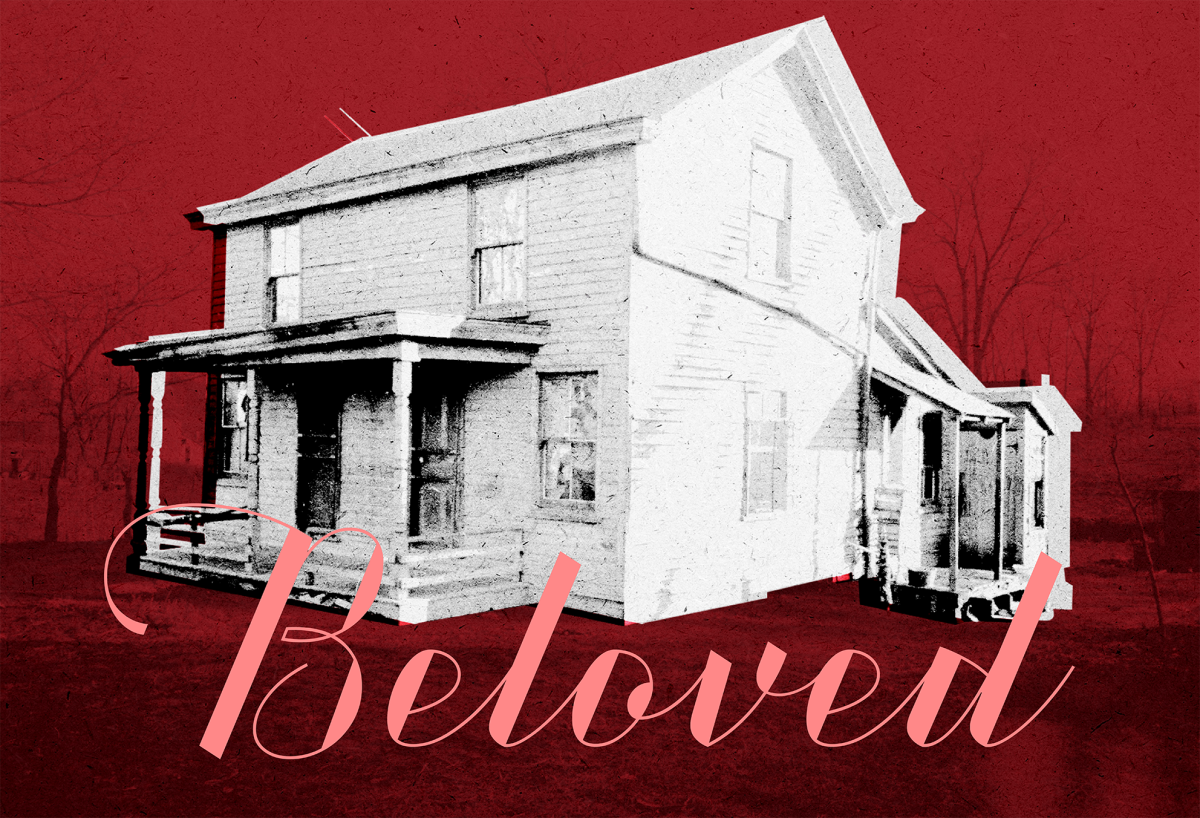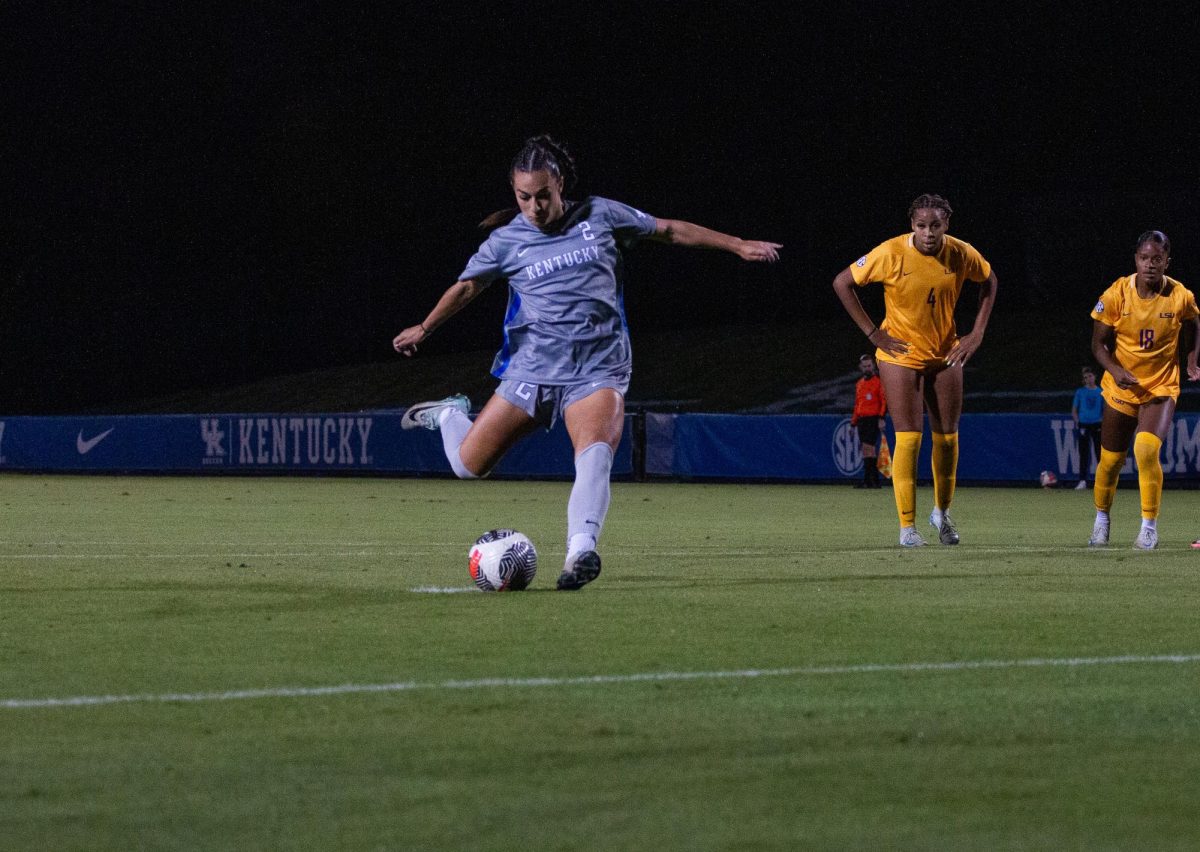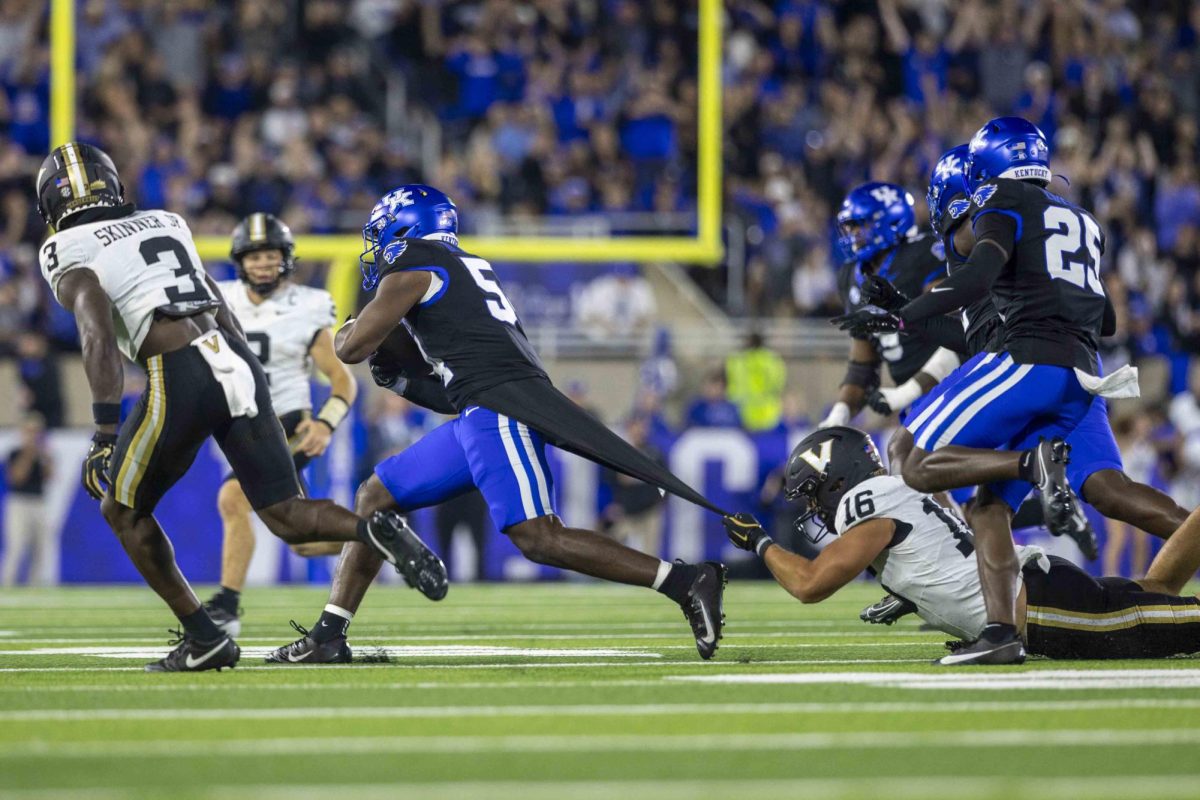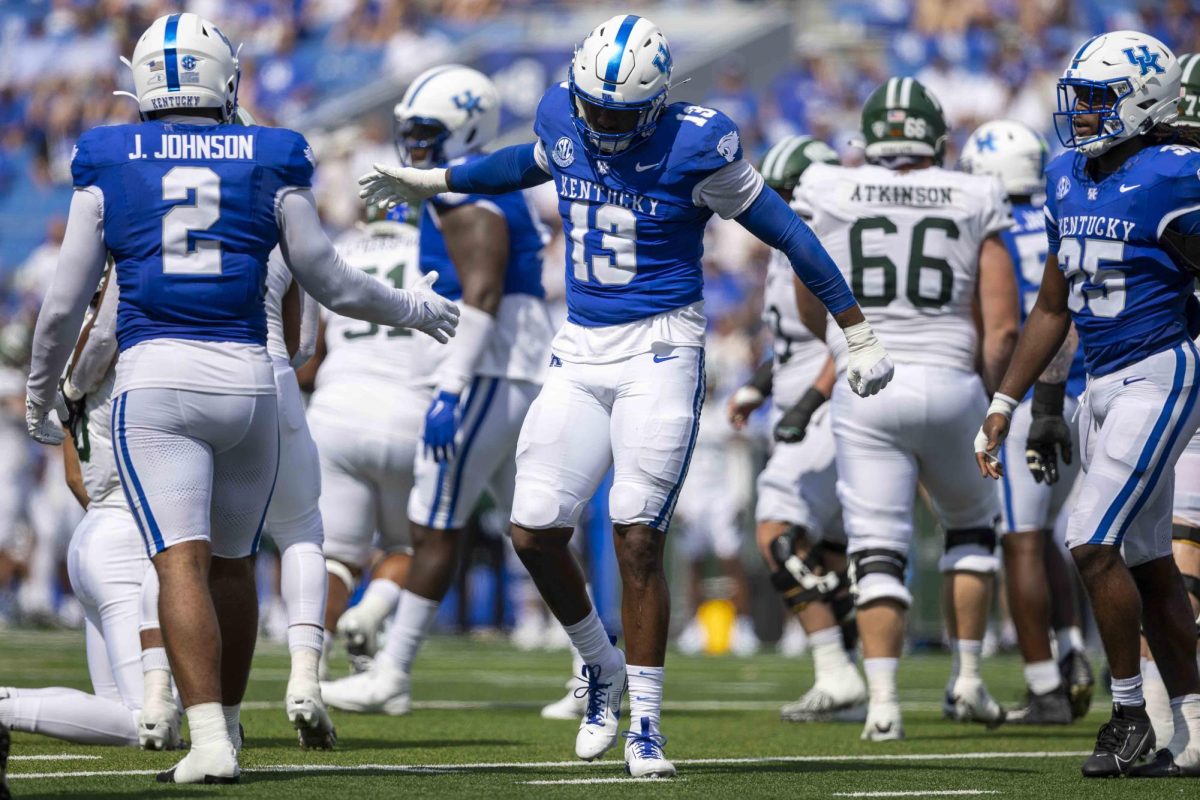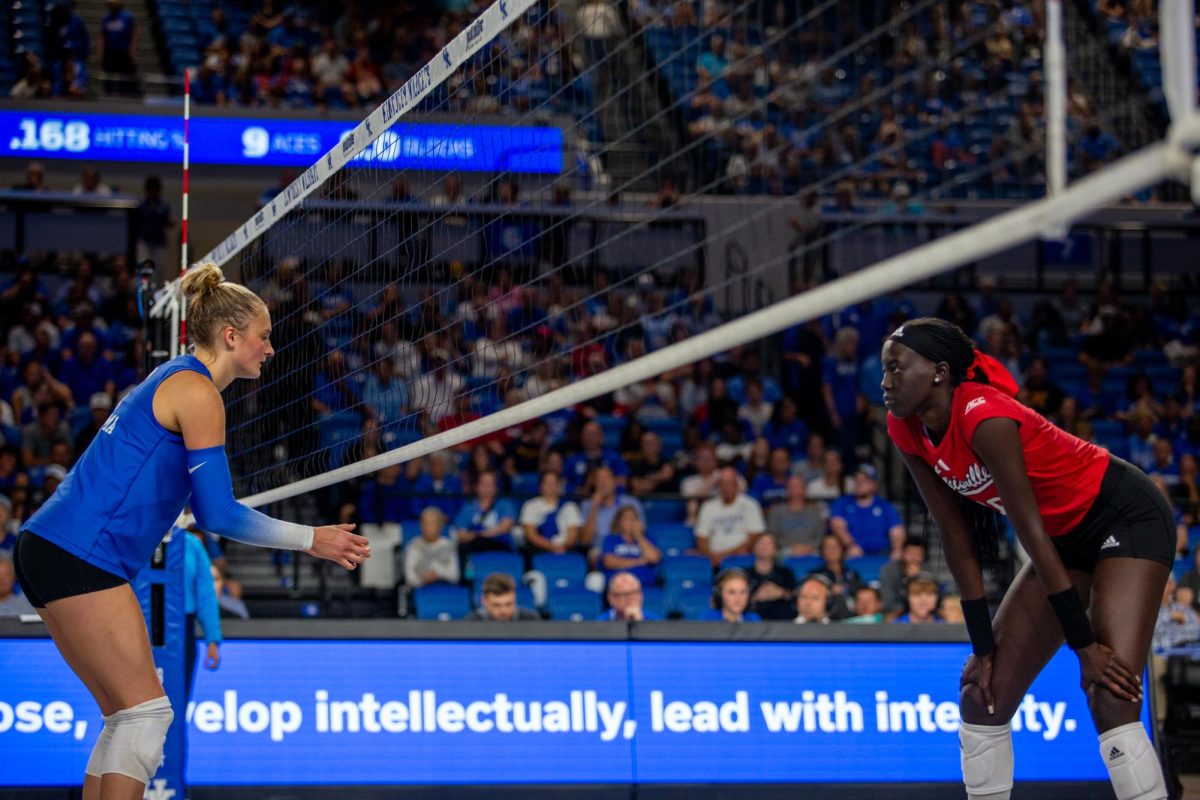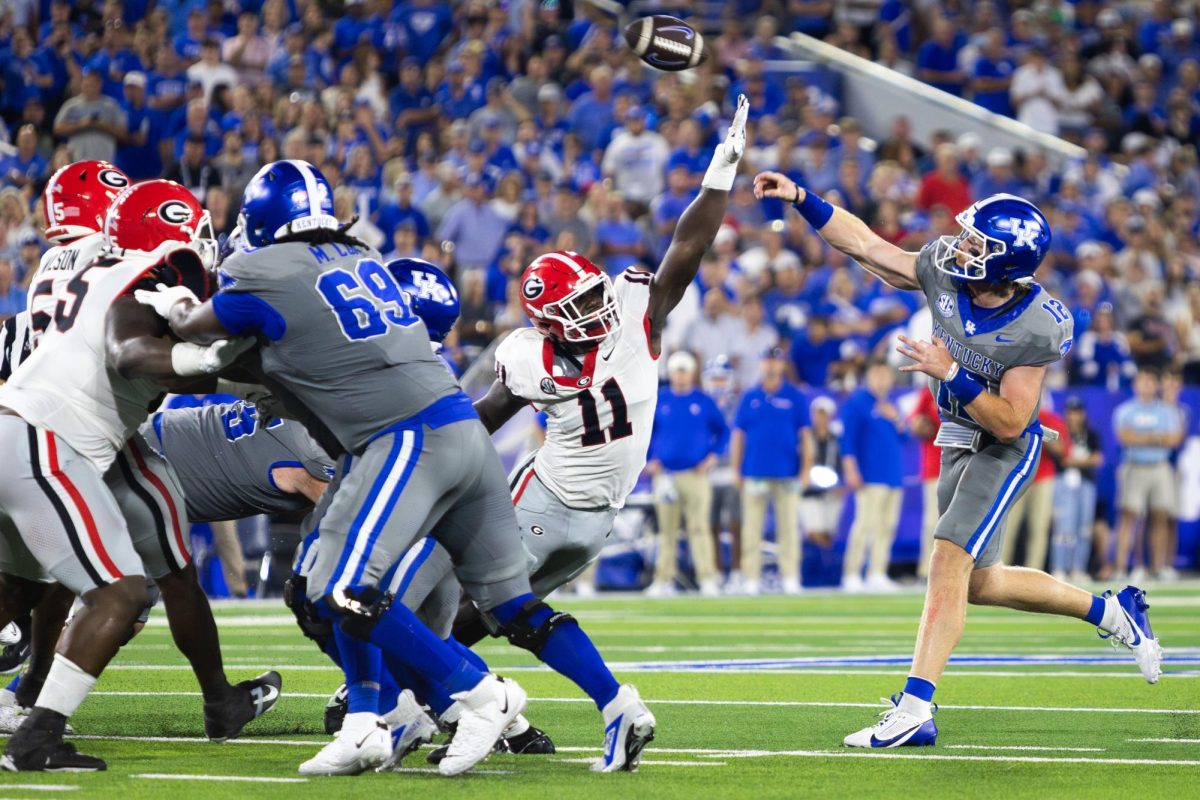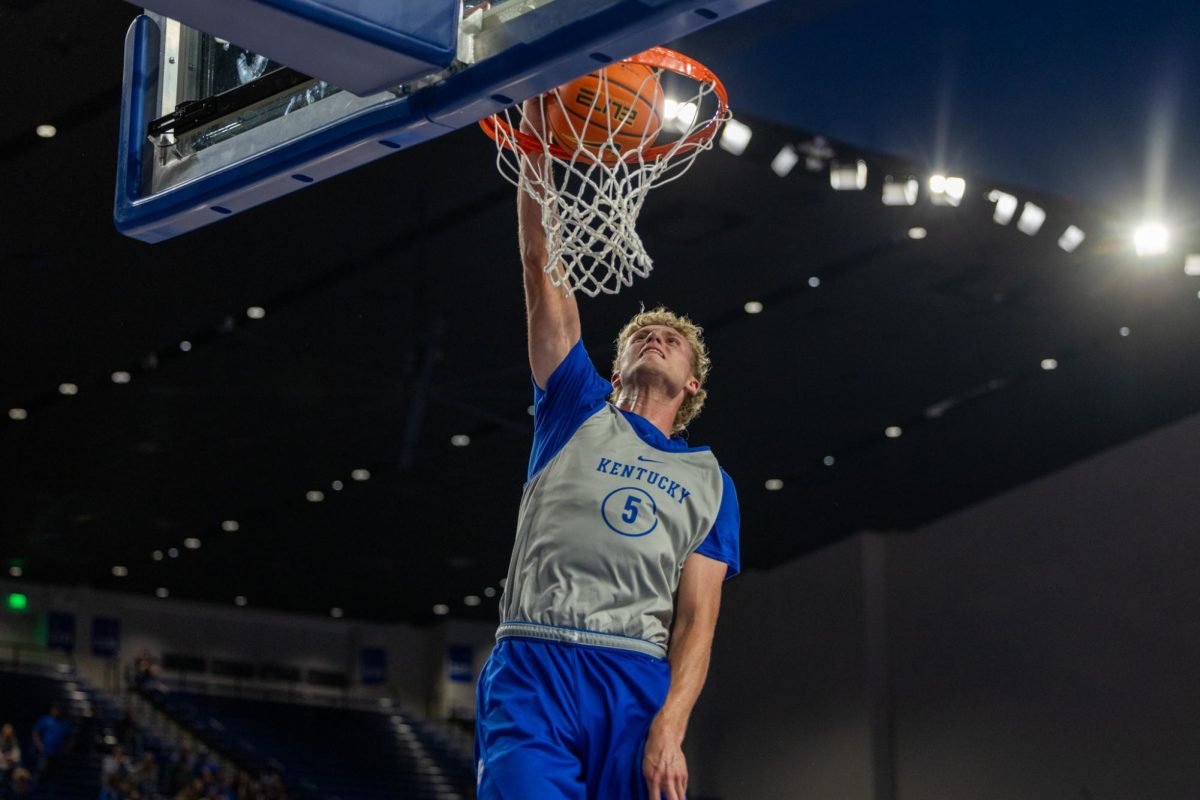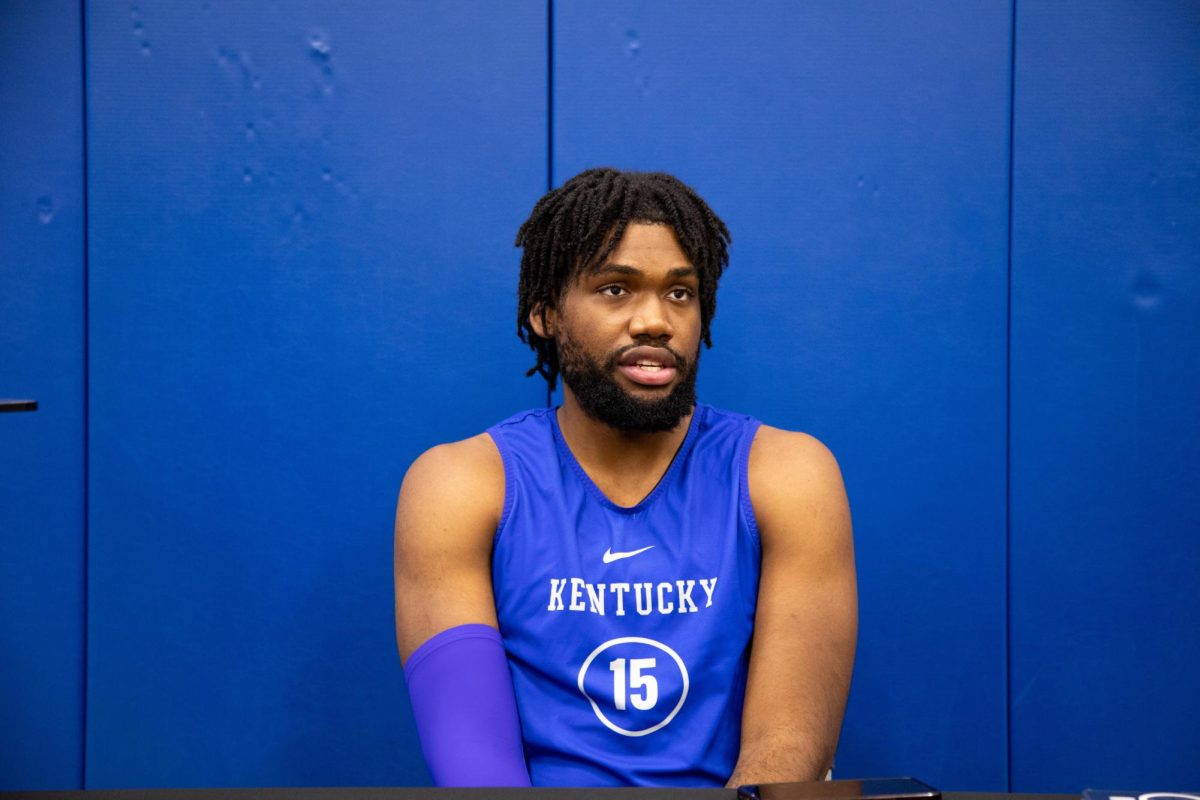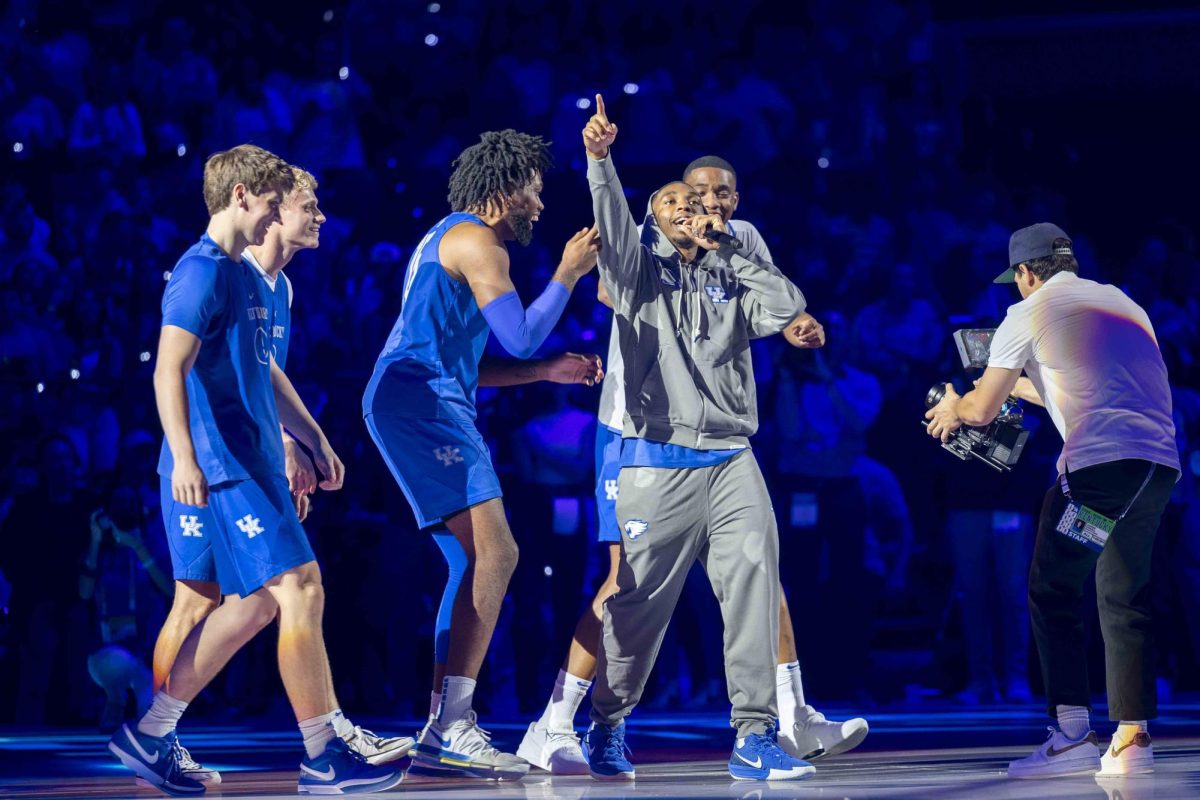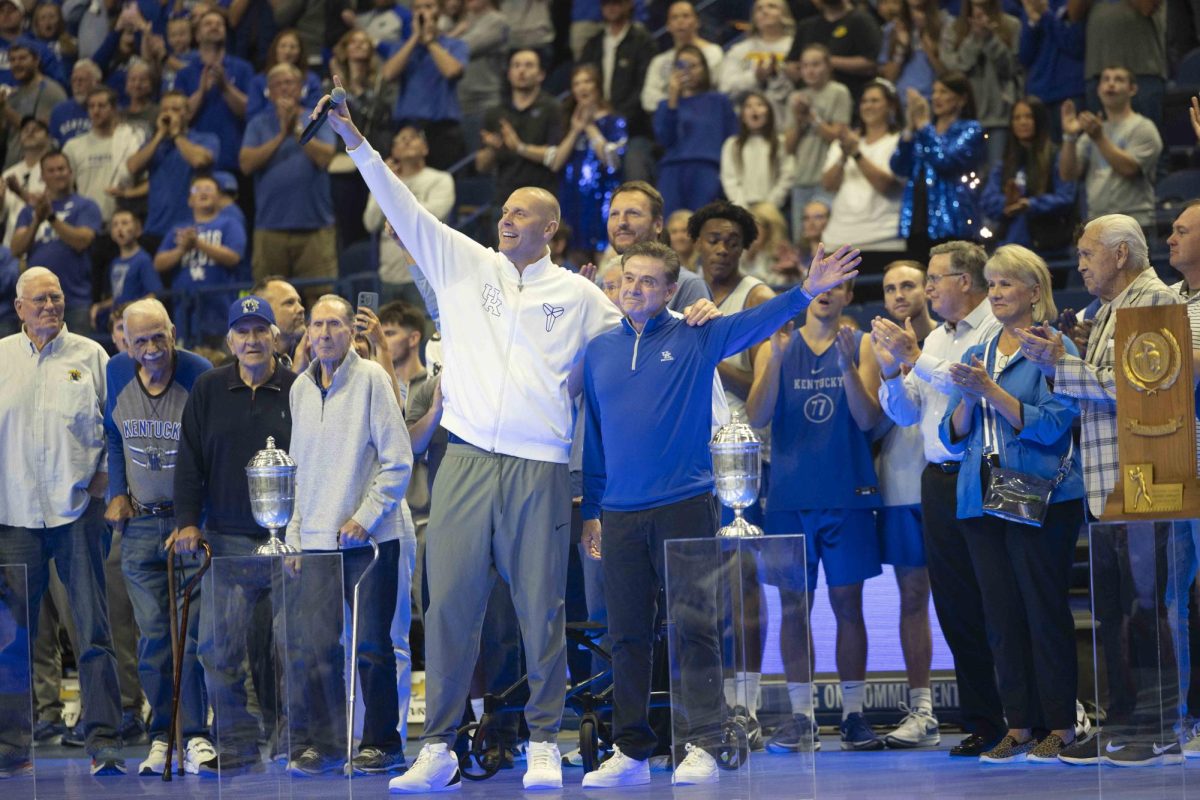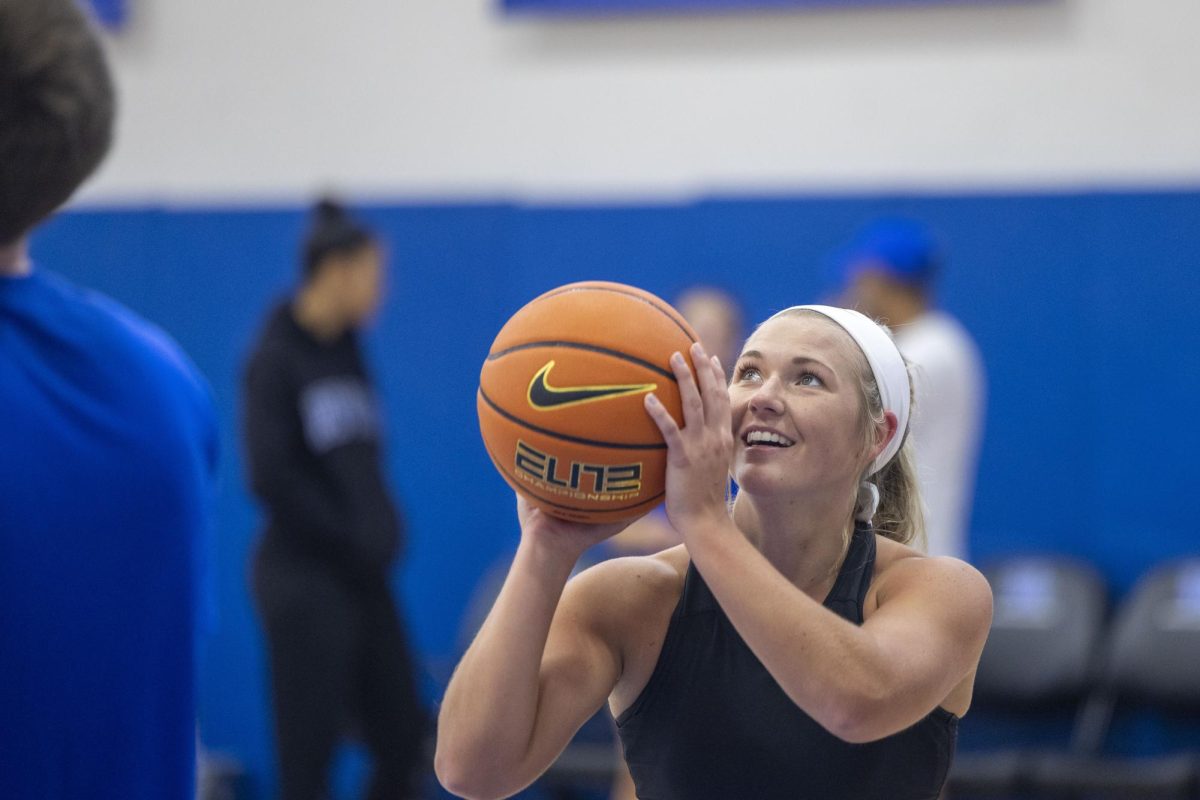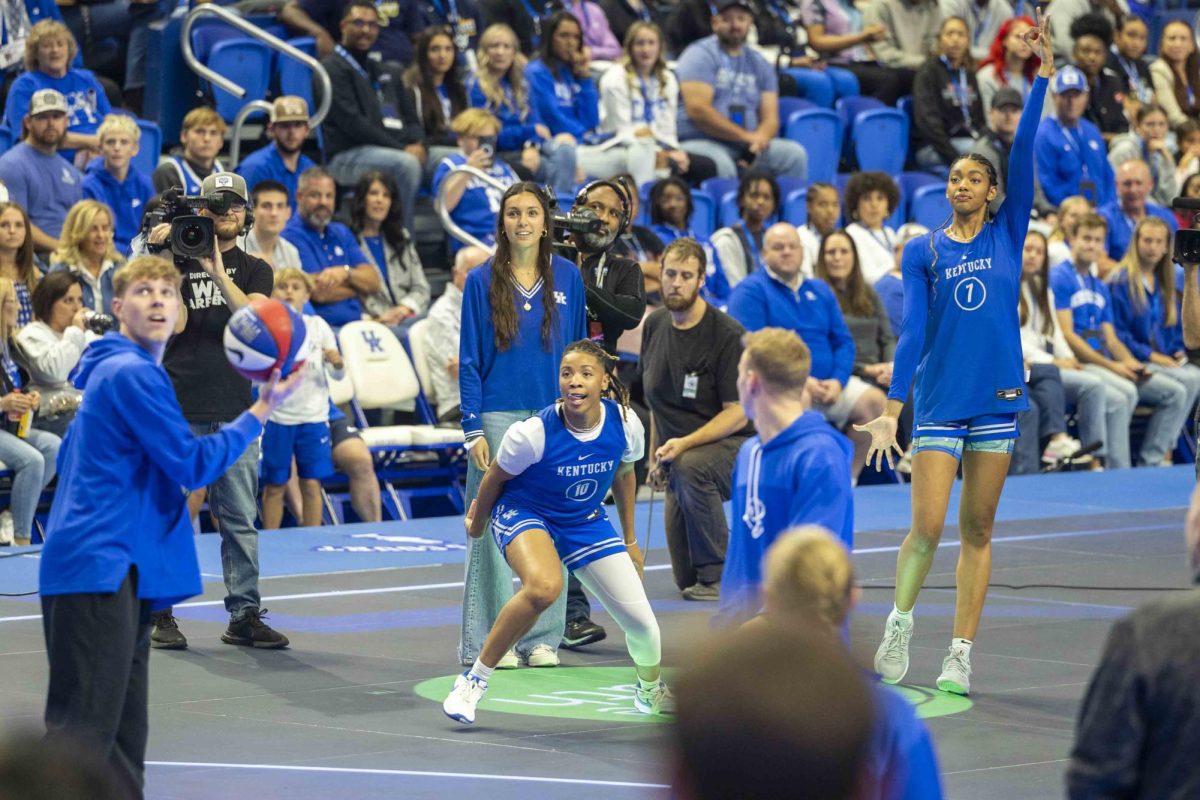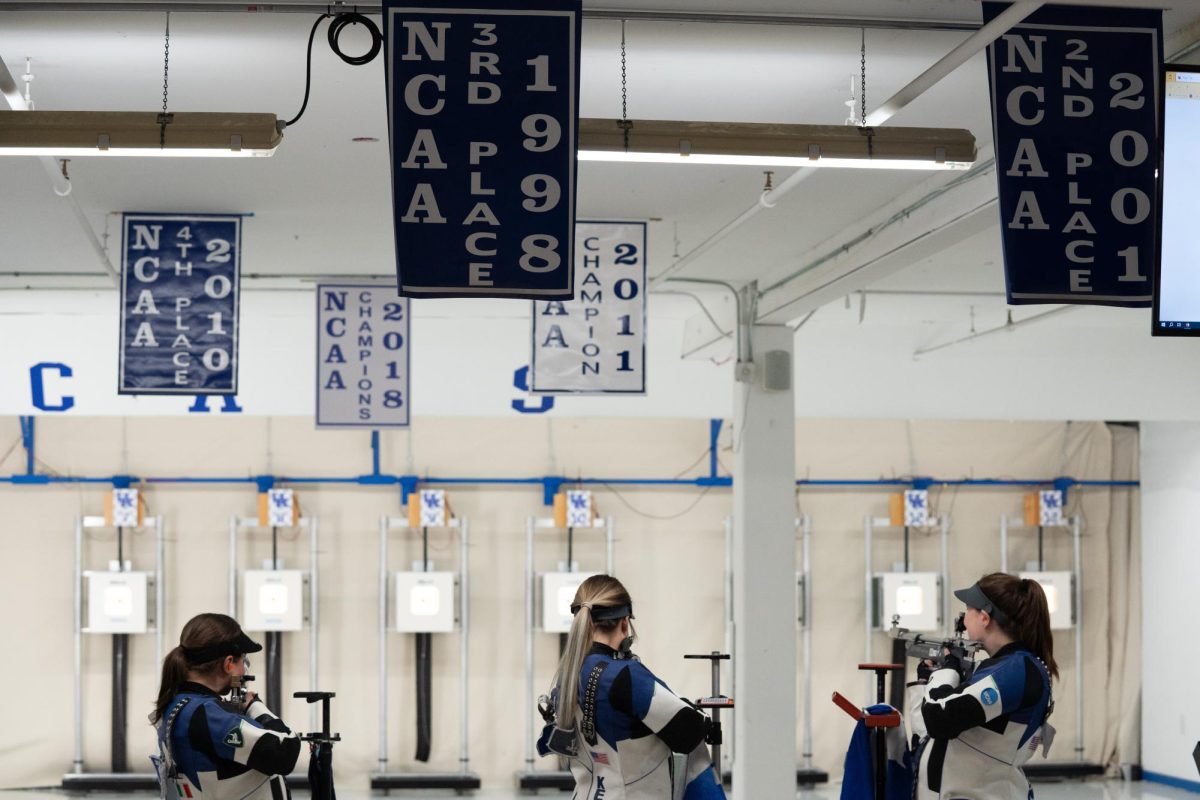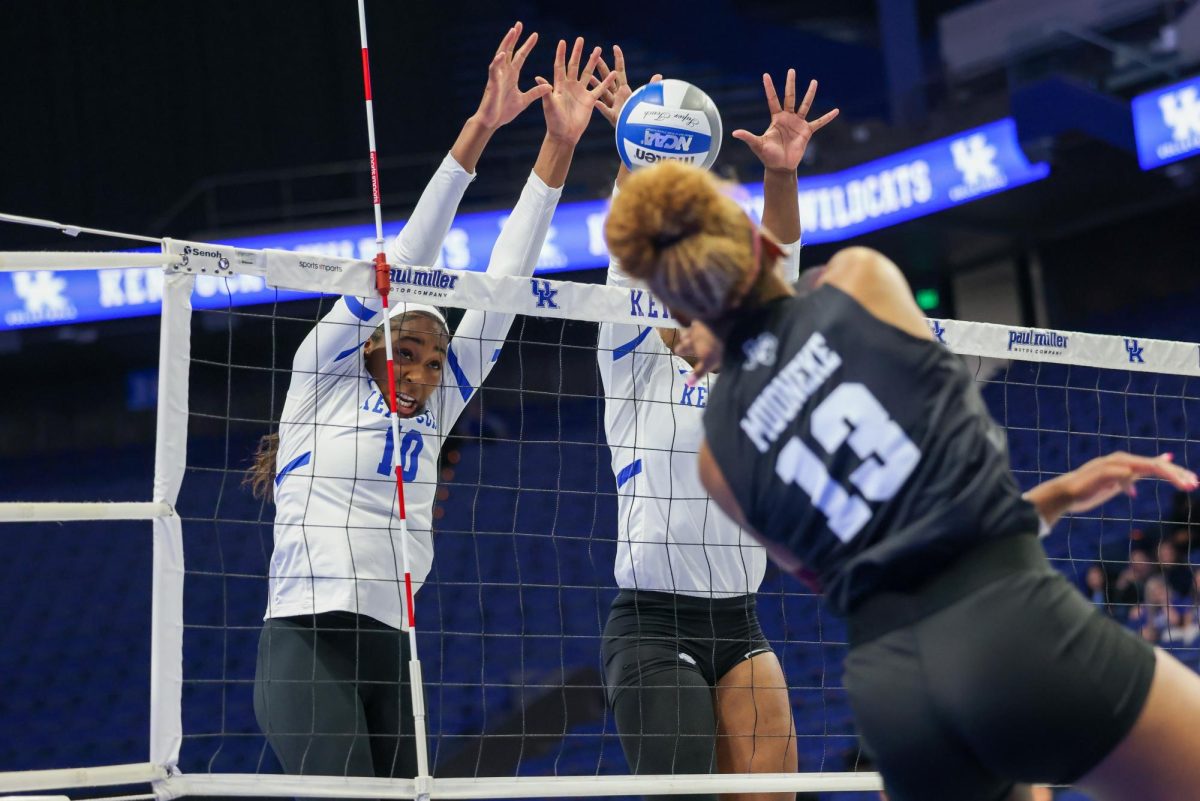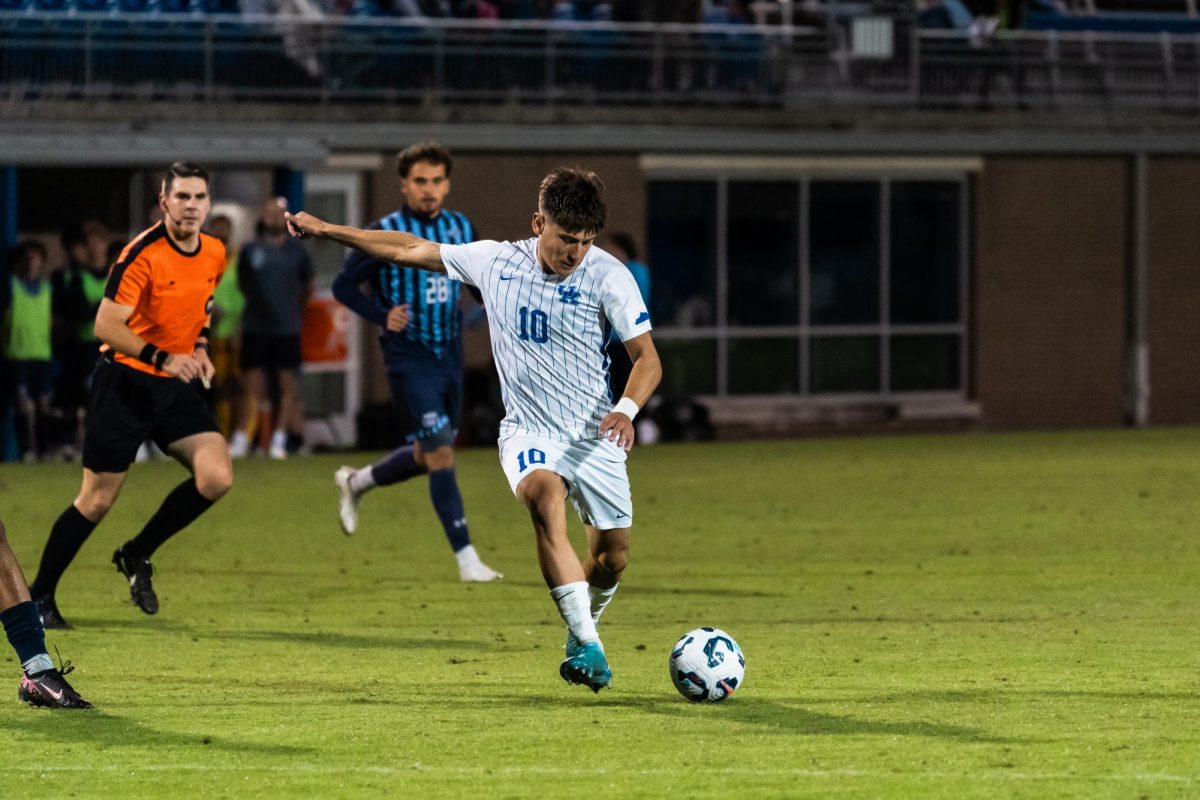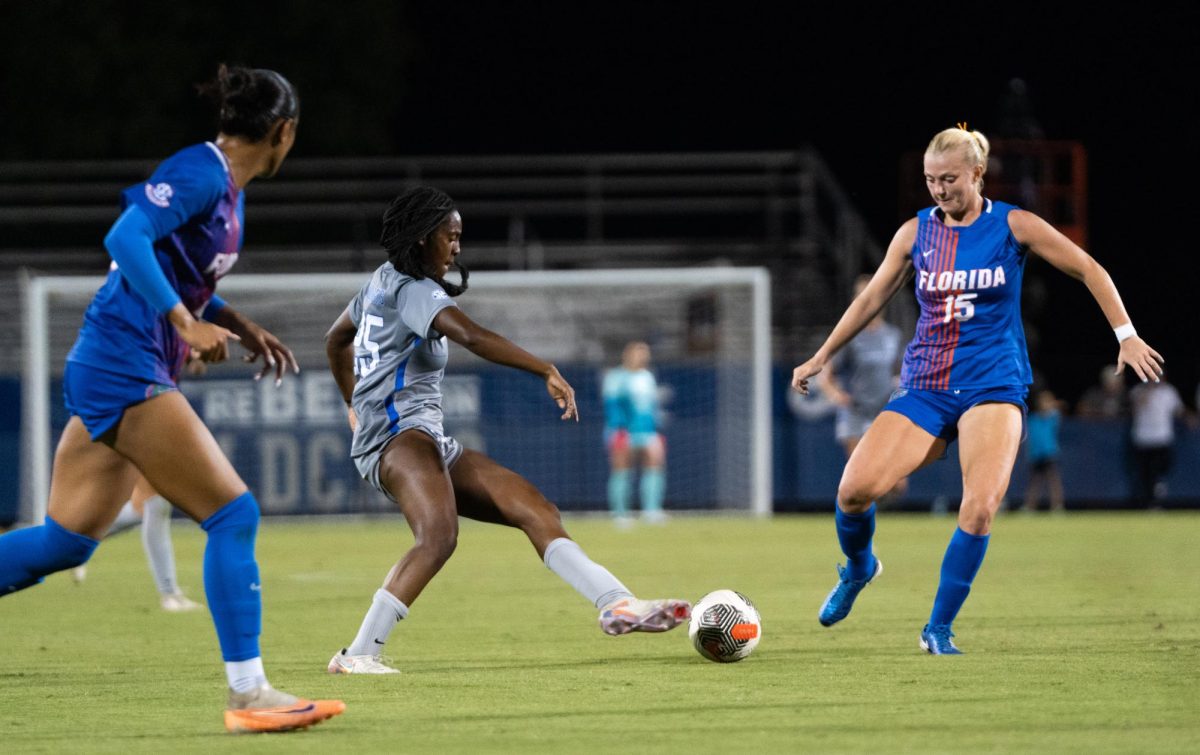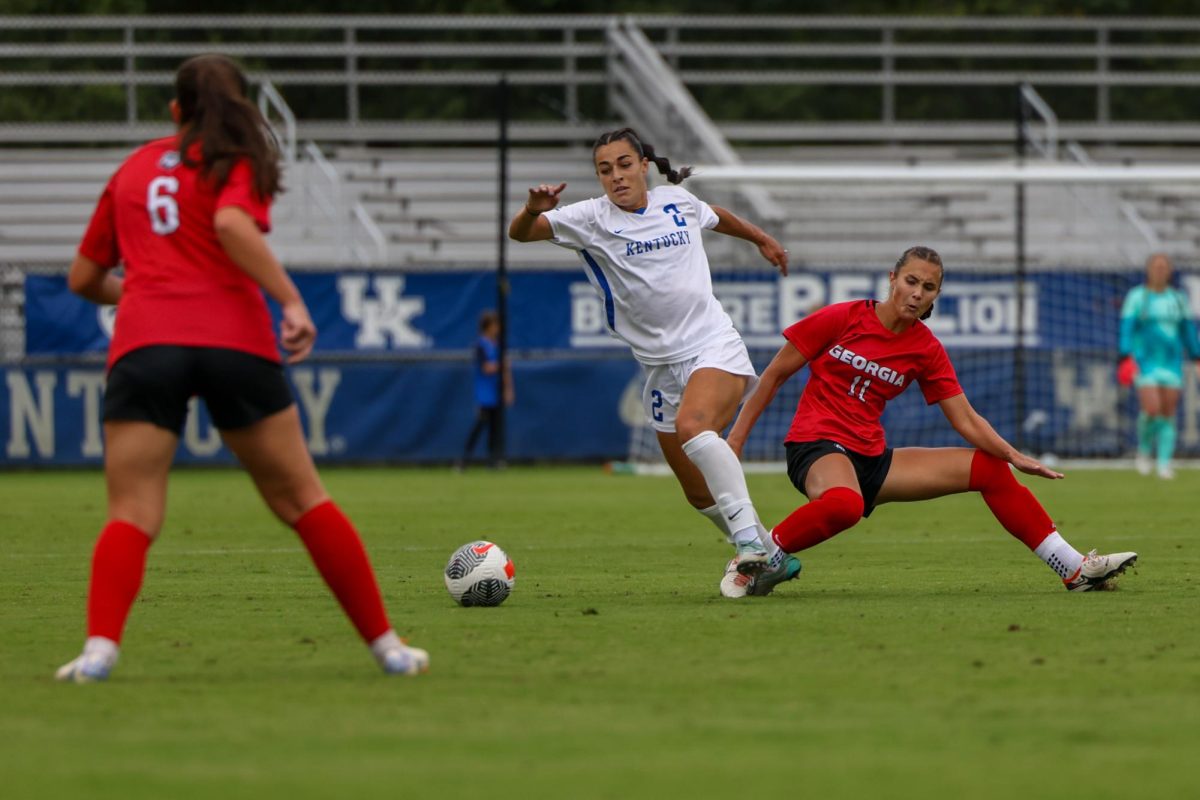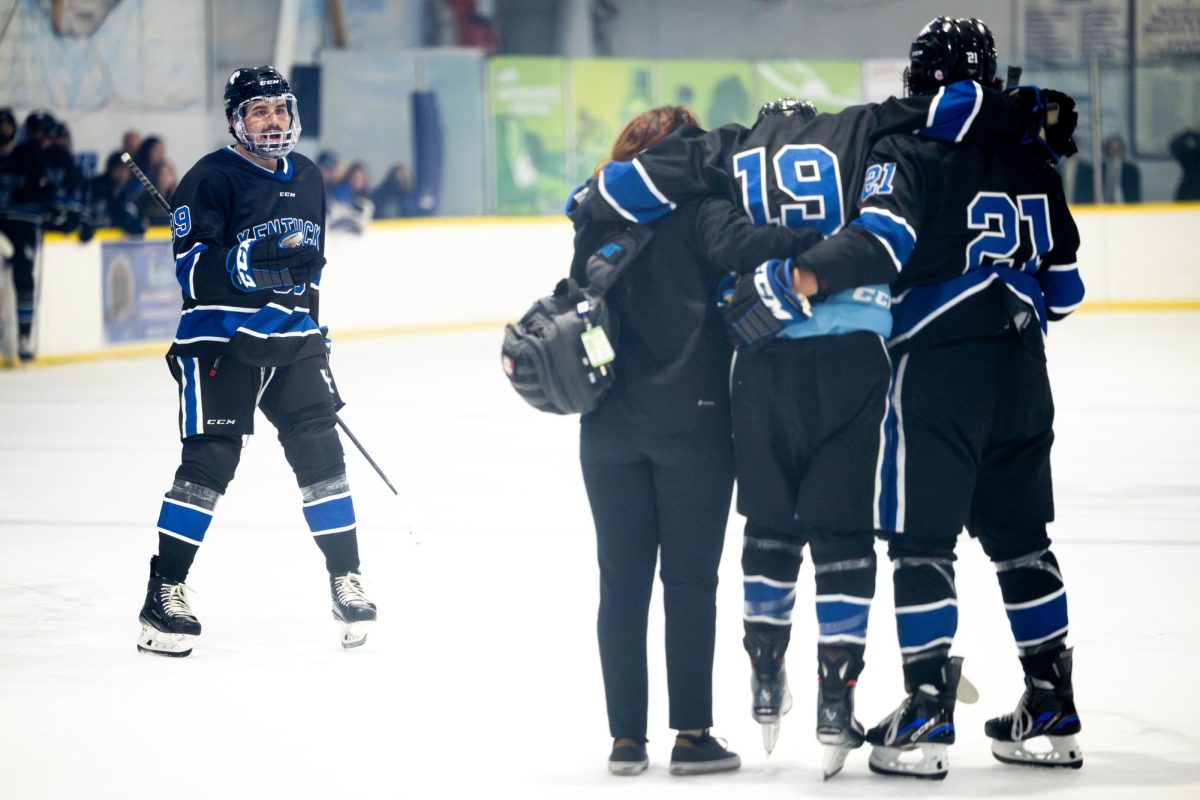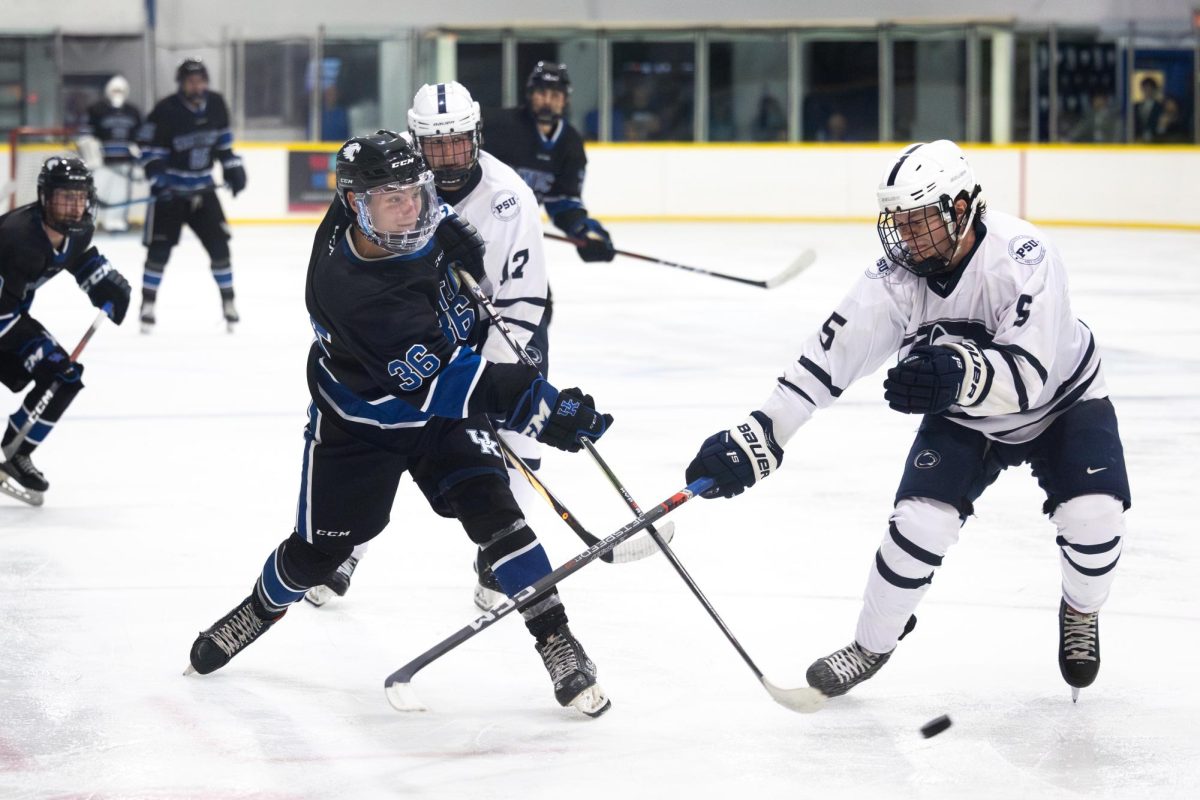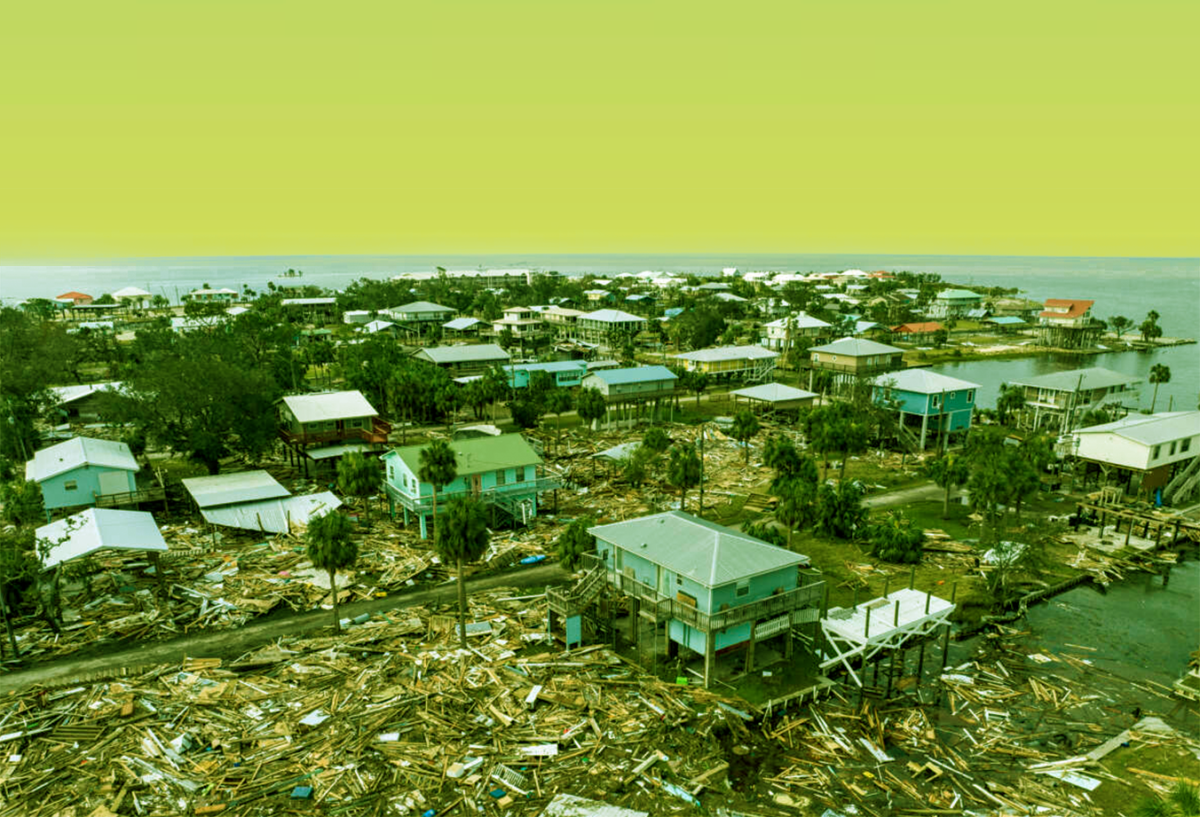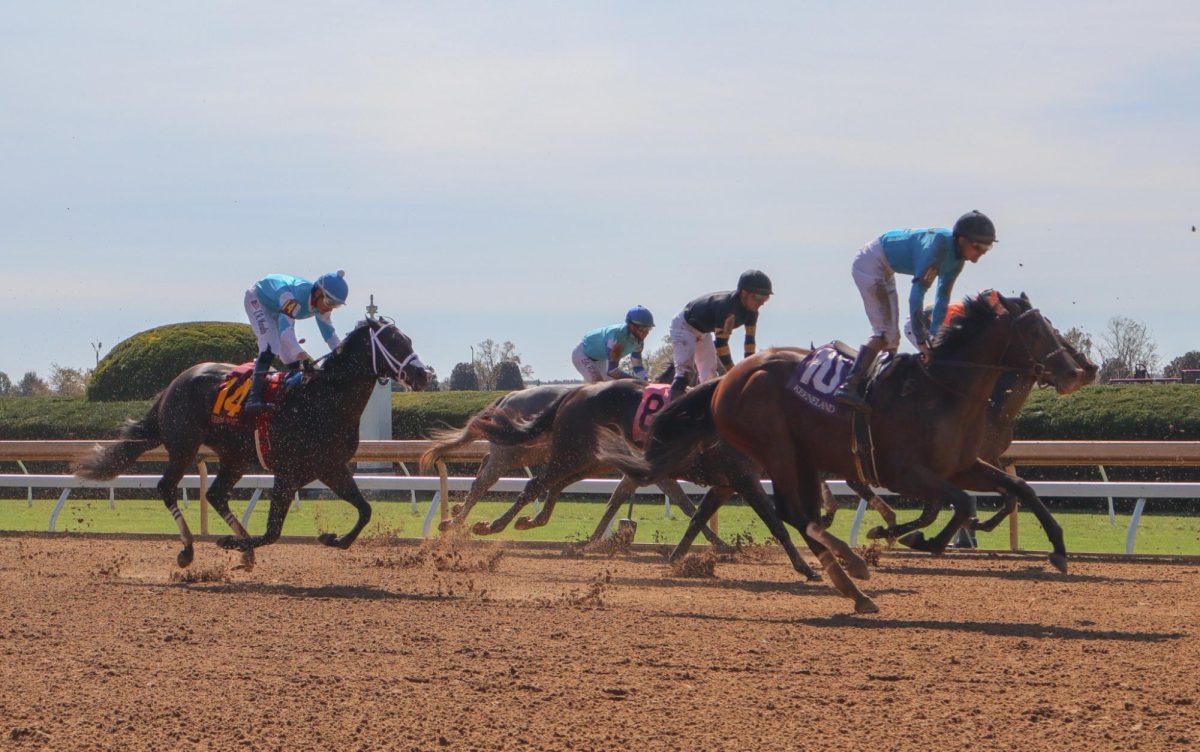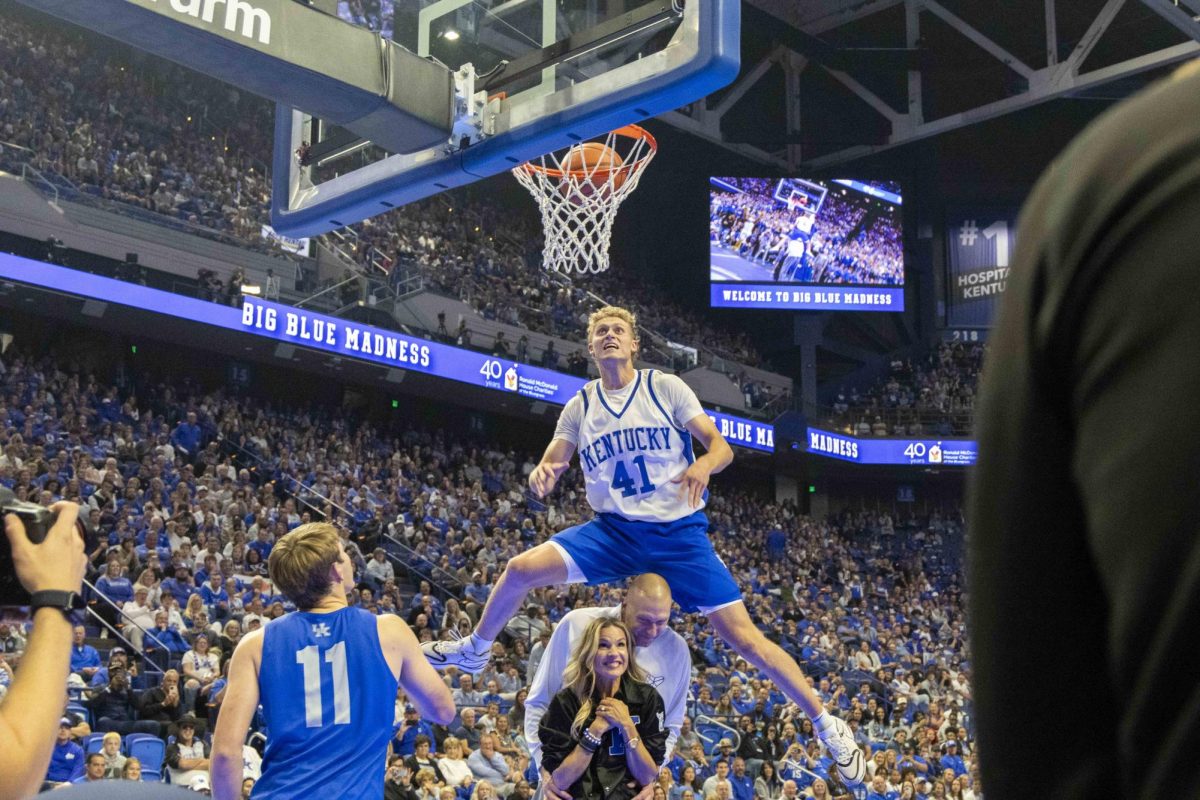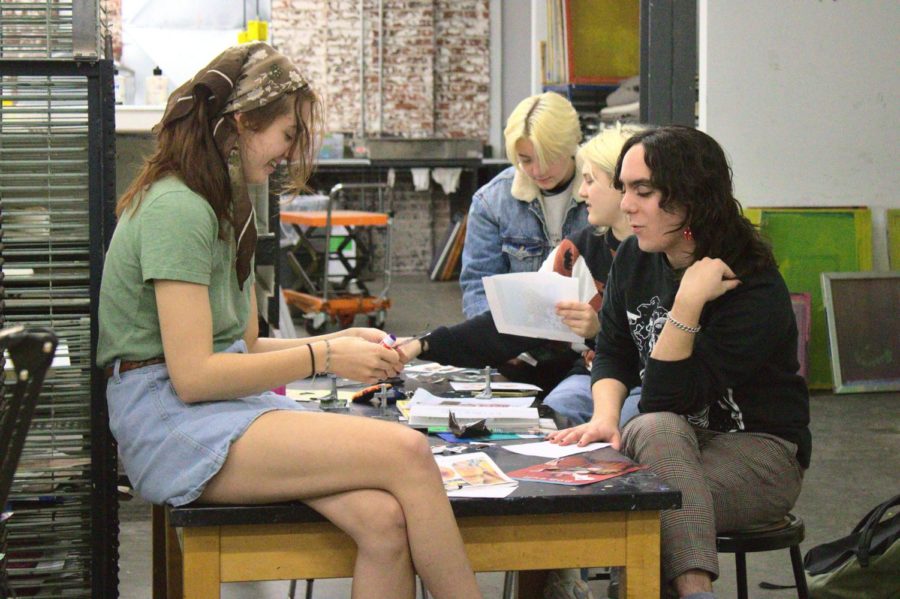With love and ‘crispy’ fervor: UK’s Zine Club is a space where passion meets art
Seniors Abby Haley and Quinn Troia converse during the Zine Club meeting on Friday, Nov. 18, 2022, at the Art & Visual Studies Building in Lexington, Kentucky. Photo by Brady Saylor | Staff
December 6, 2022
Art is usually thought of as an individual accomplishment. One may see an art piece in a museum and look for the artist’s name, never expecting to find more than one signature in the corner of the canvas. But for the Zine Club at the University of Kentucky, collaboration is the key to its artistic creations.
“The whole point of the club is for everyone to come and make art based around a theme,” senior and club President Robby Varillas said. “If you give people a loose framework to work around, it makes it feel better when it’s finally printed.”
The Zine Club was started by digital media design Professor David Wischer after a student in his zine course approached him about starting a club that was dedicated to zine creation. What started as a club of two or three people has grown into a group of about 30 students.
Wischer said that zines are a unique art form that may appeal to a large variety of people because of their versatility and the opportunity for creativity. Because they are self-published, they typically have a small circulation but allow for a large degree of artistry and freedom.
“I think it’s a type of communication that’s as blunt as you want it to be. A painting, I think, you can certainly put all of that information in words on a painting, but for the most part, painters don’t write exactly how they feel, but in a zine, you can do just that,” Wischer said.
Zines began to appear in the 1930s, when members of the Science Correspondence Club combined their writings on their favorite science fiction works into a small booklet. Their zine, The Comet, was first published in Chicago, Illinois, in May 1930. The letter section of the zine became incredibly popular among fans since they contained the contributors’ discussions and passions on science fiction.
“Zines as a medium started out as little fan objects,” Varillas said. “I don’t think that sort of fervor, that love of whatever you’re making the zine of, has left the space. I think it’s definitely still there.”
Varillas said that the Zine Club had to go through a small revival period at the end of last semester when he took over as president. Club activity had been low across campus the previous year because of the coronavirus pandemic, and he wanted to see the Zine Club make a strong comeback.
“I really wanted to get it up and running again because I thought it would be a good place for students, artists and non artists to come together and make a little art object as a community,” he said.
At a club meeting on Friday, Nov. 18, students gathered around big wooden tables covered in a hodgepodge of miscellaneous art supplies, including pages from vintage Life magazines and issues of the Quilters Newsletter. They worked alongside one another to make pages filled with imaginary creatures.
“Whatever I make, this guy’s gotta be in it,” senior Sydney Malatesta said, pointing to a drawing of a sloth. “I can’t decide. There’s so many funny (drawings).”
Every piece made at a meeting will end up in a published zine that Varillas distributes at the next month’s meeting. He and his fellow club officers design each new zine with content created at the last meeting, and then print the zine on a risograph machine. Wischer explained that a risograph operates like a copy machine but puts out higher quality prints.
Wischer said he uses zines as another platform to display his work as a collection.
“I use zines as a medium to put my drawings in where they don’t really show up in a lot of my work. But I think it’s just an attitude. People making zines are making something that they truly care about and believe in,” he said.
The club regularly posts meeting dates on their Instagram page. Themes for upcoming meetings are announced as well.
Meetings are once a month in room 242, the print media room, at the School of Arts and Visual Studies. Meetings start at 5 p.m., but there is no strict agenda for the club’s time together.
“You come and make whatever you want and however much of it you want. I let people do multiple pages, multiple spreads until they’re tuckered out,” Varillas said.
Both Varillas and Wischer see a bright future for the Zine Club, mostly because it is something that can be easily adapted.
“The great thing about this club is that it doesn’t take a lot of materials or time even to get people together to make collages and create materials for zines. It just takes the effort of advertising and getting out there and being really welcoming and inclusive,” Wische said. “I think it will probably evolve depending on the type of students we have over the years.”
Varillas wants to see more partnership with other student groups on campus before his graduation.
“I want to collaborate more with other student organizations. Me and the president of the Photo Club have been talking about doing a community-oriented photography project and then making that into a zine,” he said.
For now, the Zine Club will continue their monthly meetings and encourage anyone interested to try out this eclectic art of DIY magazine making.
“It’s art therapy. It’s new wave. It’s crispy,” Wischer said.


